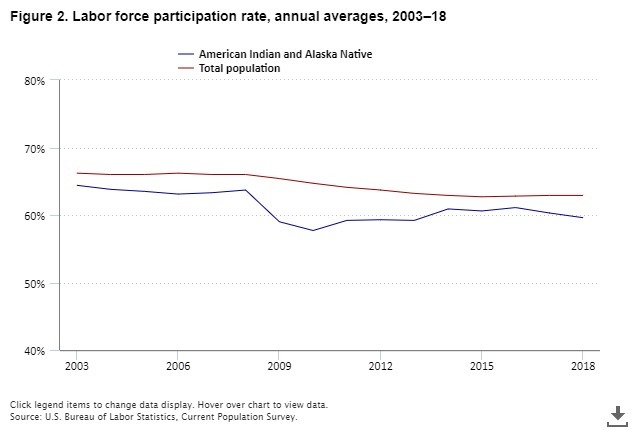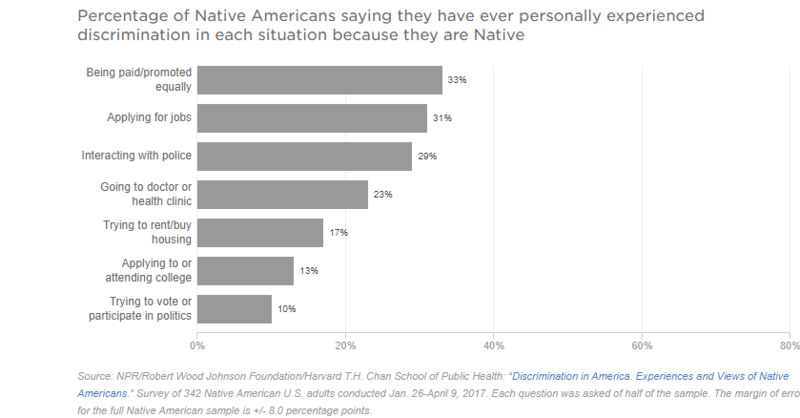Discrimination and lack of economic opportunity off reservations
As of 2018, the population of American Indians and Alaska Natives exceeded 2.9 million people. The unemployment rate for this group reached 6.6% while the national rate was only 3.9%. In this same year, the labor force saw less natives participating with about 59.6% of their population actively working or looking for work, which is less than the national average, 62.9%. The question is, why does this small population of people have such a high unemployment rate? Unemployment is the superficial issue. According to the Bureau of Labor Statistics, the young, working population of this group (16-54) were more likely to be working or looking for work compared to older groups. They were also more likely to have disabilities or lower educational attainment that prevent them from working. Both issues stem from generational traumas and/or lower chances of opportunities due to discrimination or racism.
Out of the 2.9 million natives living in America, almost one third stated they faced discrimination in some form or fashion in the actual workplace. This includes when searching for jobs, earning equal pay and promotions. About two thirds of natives that lived in native majority areas, stated that the availability of jobs locally were worse than in other non-native majority places and about the same amount said that they were paid far less than their white counterparts when doing equal work. This form of oppression is far from modern, for centuries Native Americans have been oppressed, it’s just in more recent years has it become economic oppression. “This is something that I feel is important for anybody who is trying to understand someone who has to talk about their oppression to the people who benefit from that oppression, you're pleading your humanity, and to do that is hard."—Howie Echo-Hawk of the Pawnee Nation of Oklahoma.


